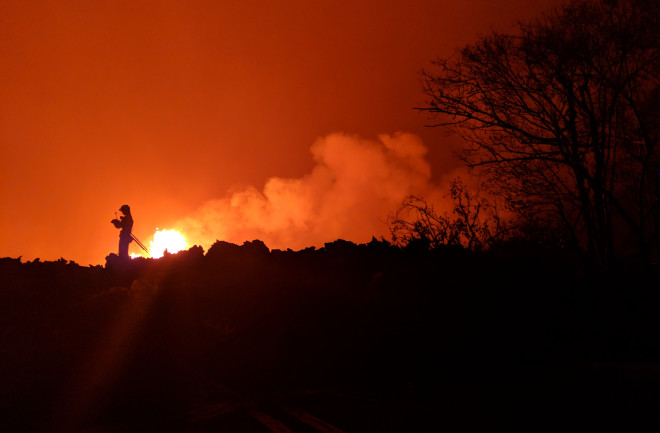Everything in the fire station parking lot was bathed in a red glow. Although this is Hawaii, the air felt especially steamy and warm. Nearby, lava fountains up to 150 feet (60 meters) tall were blasting from fissures. The scene was vaguely apocalyptic, beautiful but terrifying. Kīlauea had started to erupt from the lower East Rift Zone for the first time in over 50 years, right in the middle of the Leilani Estates subdivision, pouring lava into people’s backyards.
For U.S. Geological Survey volcanologists from all over the country, this was an “all-hands-on-deck” and possibly once-in-a-lifetime event to monitor the lava flows that were endangering people and property across the eastern tip of the island.
One of these volcanologists was Alexa Van Eaton, research geologist for the USGS. Normally stationed at the Cascade Volcano Observatory, she found herself in Hawai’i, mapping lava flows in a place she had never been. She’s a self-described “Florida girl” who was walking near active lava flows for the first.
In fact, she had never really worked on lava flows at all. Her specialties are explosive eruptions, ash, and volcanic lightning at places like Mount St. Helens, New Zealand or Japan. However, this was a volcanic crisis where people’s lives and homes are at stake. She was ready to go. Little did she know the realization soon to come in a dark parking lot ... and the long path that was taken to get to there.


